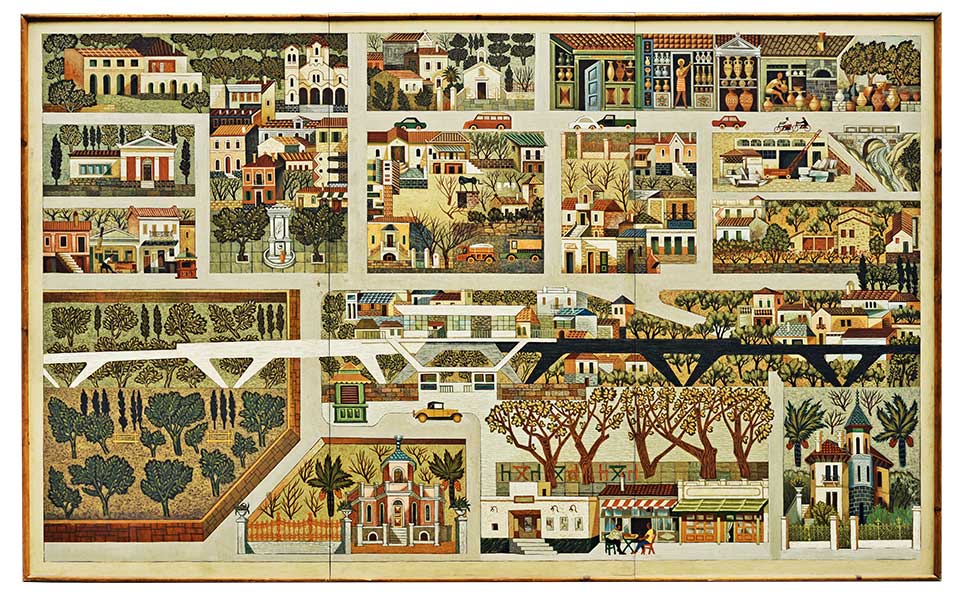The exhibition “Urbanography” has assembled representations of the city in Greek art from the 1950s, 1960s, and 1970s with the intention of highlighting different iterations of the urban experience. The exhibition includes more than 200 pieces of art, including paintings, sculptures, engravings, installations and photographs, together with clips from 21 Greek films, some popular cinema hits and some works of cinéma vérité, in an aim to foster a dialogue between the arts.
One catalyst for this dialogue is provided by the large-scale cinematic posters painted by Giorgos Vakirtzis to advertise the films on at the cinemas. From the 1950s, these works infused a bit of cinema magic into city life through painting. At the time, they were regarded as images of mass culture rather than as works of art. However, the oversized portraits of the protagonists, with their realistic narrative quality, vivid colors, and dramatic intensity, essentially proposed a new type of urban representation. These works embodied elements of pure, functional pop art, using art to communicate and promote a message. They enhanced the allure to the public of the dark cinema hall, supporting an imaginative identification with their celluloid heroes and, by doing so, contributed to the further dissemination of the urban lifestyle, of which spectacles are a crucial aspect.
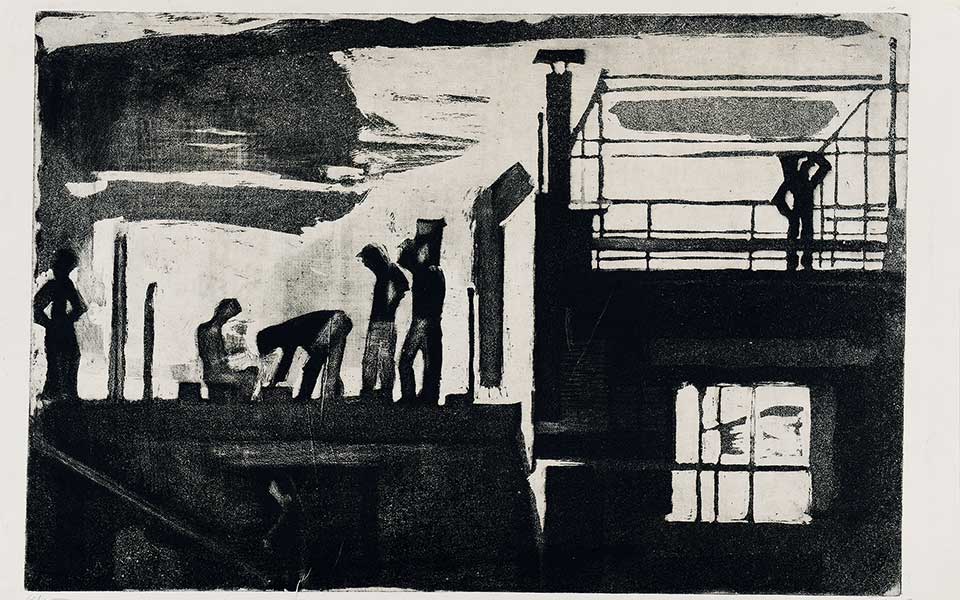
The experiential function of art is one of the key issues raised by “Urbanography,” relevant both to the creators themselves and to how the exhibitions connect with the public. Artists interpret the city not merely as a structured environment that encompasses them but also as a daily experience, a context they confront in terms of recognition, safety and acceptance, or in terms of exploration, negotiation and conflict. This is why the exhibition approaches the city as an experience, examining urbanization, reconstruction and migration within the framework of the rapid changes that occurred in post-war Greek society.
It tracks the radical transformation of the urban landscape caused by the property exchange system known as “antiparohi,” which led to the gradual disappearance of single-family homes, and looks at how scale, horizon, and frame are reshaped by the construction of apartment buildings and modern commercial establishments, the opening of roads, the creation of new city squares, and the increase in traffic of both people and vehicles. The residential and population shifts form new dynamics between the metropolitan center, the neighborhood, the suburb, the refugee areas, and locations where unauthorized construction is taking place. While the average standard of living improves significantly, new social divisions and exclusions emerge as well.
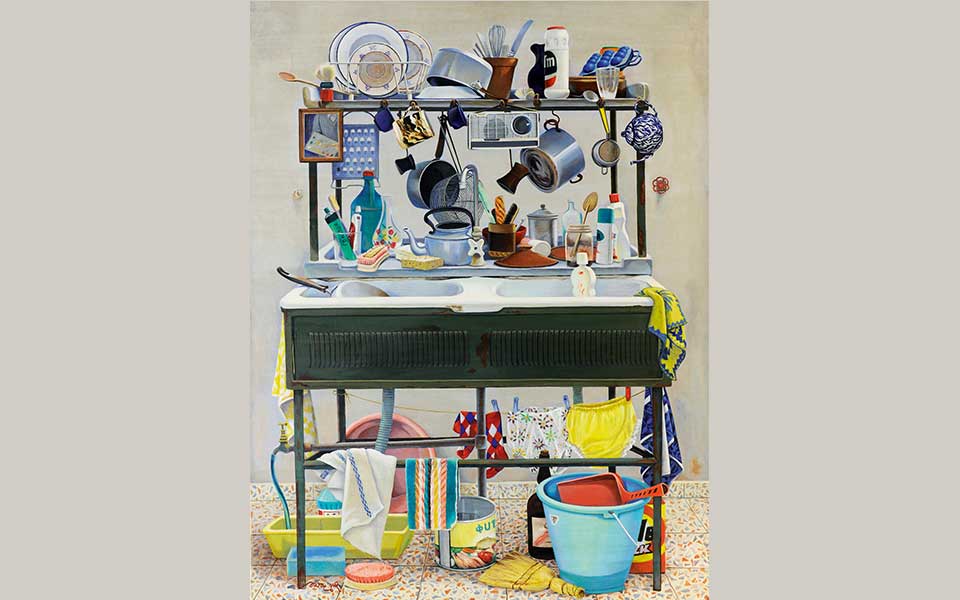
As the city grew
The construction site, a clear and potent symbol of the urban landscape᾿s evolution, occupies a central role in “Urbanography.” The “reconstruction” era, marked by a construction boom and city expansion, significantly broadens the thematic scope for artists with fresh fields of study. Drawing from their own unique backgrounds and interests, they craft a narrative of this building boom. This period of change also sees a transformation in daily life fueled by the spread of urban culture. The rise of a society centered on spectacle and consumption, along with the novel experiences that the city offers, becomes a crucial backdrop for shaping identities, particularly for both internal and external migrants. Elements such as football, cafés, shopfront displays, advertisements, fast cars and motorcycles, nightlife venues, tourism, seaside holidays, and household products that improve daily living, all offer possibilities and serve as rich source of inspirations for urban imagery in the works of artists like Yiannis Gaitis, Giorgos Paralis and Giorgos Ioannou.
In the realm of ethnographic painting, the dominant narrative portrays a specific identity that is being altered, encapsulating a resistance to changes perceived as threats to the disruption of a secure and familiar environment. This style of painting often depicts scenes from everyday life, capturing the essence of cultural and social dynamics in a period of transition. Against this backdrop of sometimes idyllic and idealized portrayal, the New Greek Realists of the early 1970s made a pivotal break. Utilizing the tools of critical realism and the practice of collective action, they aimed to highlight and interpret the contradictions inherent in the modern way of life. This marked a significant shift in the Greek art scene, as artists began to critically engage with the complexities of everyday life and the evolving urban experience, moving beyond traditional representation to explore the deeper, often conflicting realities of society.
During the same period, ethnographic cinema, a paramount form of popular entertainment, experienced remarkable growth. This genre, accessible and affordable, spread widely among both urban and rural populations, particularly resonating with working-class audiences. Despite criticisms of their stereotypical simplicity and their uncritical focus on the passions of private lives, the Greek films of the 1950s and 1960s played a significant historical role as conduits of modernization. These films were pivotal in introducing new perspectives on gender relations, family dynamics and societal roles, effectively becoming a sensitive canvas for documenting cultural and social transformations within the urban landscape. They navigated the delicate interplay between private and public life, contributing, as cultural catalysts, to these very changes.
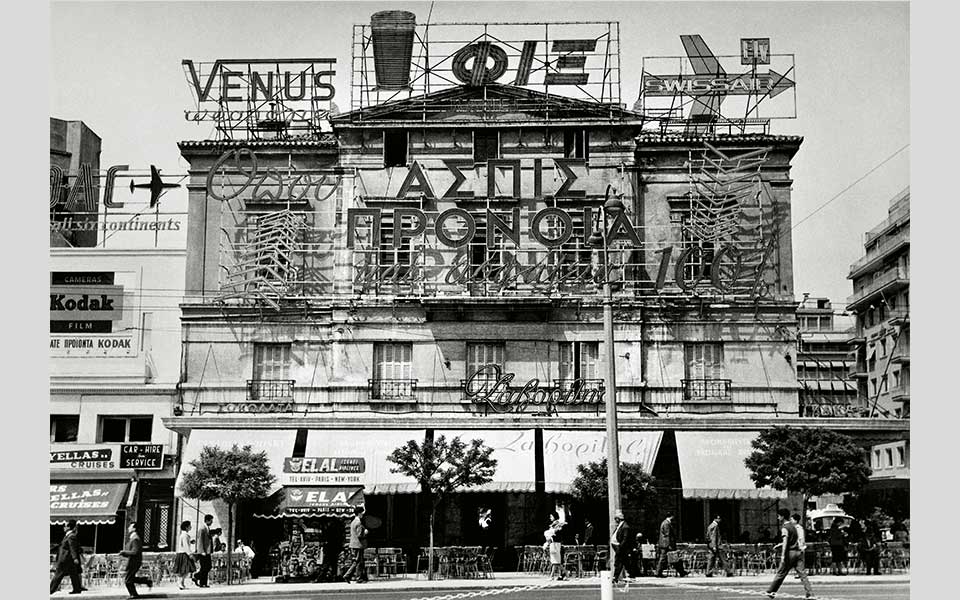
The role of the movies
These movies deftly sketched out the evolving conditions of coexistence in urban centers, neighborhoods, and apartment blocks. They shaped consumer habits, attitudes, and both individual and collective behavior. Their enduring appeal is tied to the relatability of their settings and the articulation of societal shifts. The recall of now-lost or altered landmarks in these films adds to their allure rather than detracting from it. In the early months of the exhibition, even before the start of organized educational programs aimed at fostering intergenerational bonds through art, it was clear that certain cinematic scenes and artworks were inspiring older visitors to share personal stories with their children or grandchildren. These narratives, rich in references to the time, place and spirit of the artistic creations, bridged generations and deepened people’s engagement with the art.
The perspective of mainstream or commercial cinema in the urban setting is sharply contrasted by the incisive gaze of creators experimenting with critical realism in the 1960s. This viewpoint, while less popular in its time, later emerged as highly influential. Drawing inspiration from the dynamism of cinematic camera movements, the exhibition’s narrative layout undertakes a continuous shift from grand to intimate scales, transitioning from panoramic views to close-up shots.
In “Urbanography,” the multifaceted city life is meticulously scrutinized. Spaces like the city, the square, the street, the neighborhood, the alleyway, the construction site, the apartment complex, the balcony, the shop front, the individual apartment, and even the doorstep, all become focal points. These varied urban elements highlight different facets of urban coexistence, each illuminated from a unique perspective. The exhibition artfully navigates through the public and private realms of urban life, offering a nuanced exploration of the city’s complex tapestry.
This approach not only showcases the breadth of urban experiences but also investigates the subtleties and intricacies of city living. It᾽s an artistic endeavor that captures the essence of the urban landscape, reflecting its diverse and ever-changing nature through a kaleidoscope of artistic lenses and interpretations.
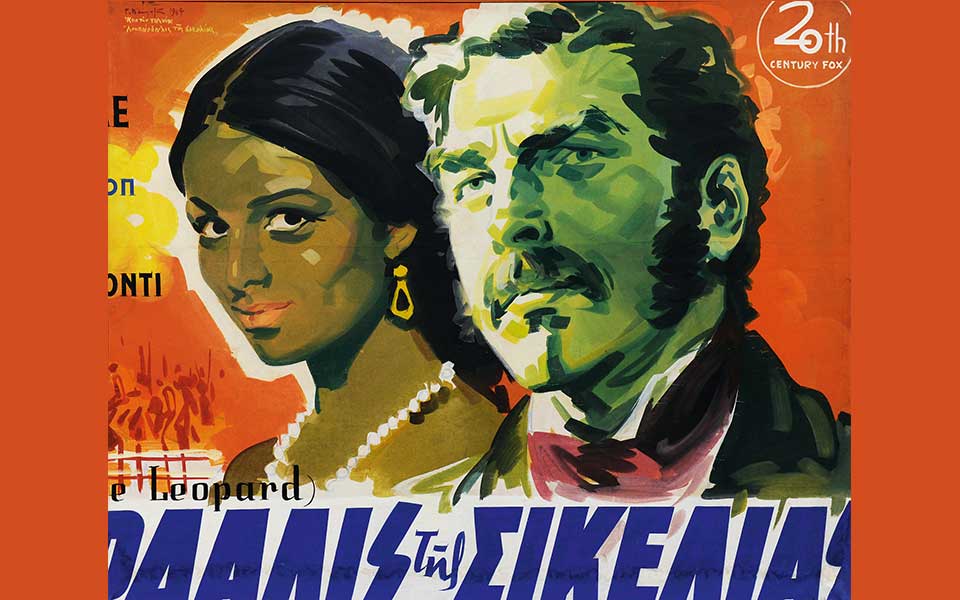
Thematic sections that include “Urban Scenery,” “Construction site,” “Nostalgia,” “Spectacle,” “Close-Up,” “Dreams and Conflicts,” and “Materialities” articulate the sequence of themes in the exhibition᾽s narrative. They function more as guideposts, key words that help “unlock” certain areas, rather than as strictly distinct and compact units. The titles suggest an energy density in the sections that can potentially move from point to point, depending on the viewer’s perceptions and desires.
Admittedly, this choice of fluidity in the boundaries between exhibition sections is not a conventional curatorial approach. However, it consistently serves the function of visual representation, as the perceptual patterns produced by the artworks are neither one-dimensional nor watertight. For instance, the theme of spectacle intersects with nostalgia, and vice versa. The close-up absorbs the conventions of scenography. Moreover, the interpretation of meaning and the emotional impact elicited by encountering an artwork is a relational, fluid condition: it largely depends on the terms of the visit, the tracing of a solitary or group journey, the curator᾽s choices of works that neighbor, converse with, or contrast each other, and on the individual viewer’s personality and/mood.
In the end, this blurred-edge approach reflects the multifaceted and interconnected nature of urban life itself, as well as its representation in art, offering an immersive and interactive experience that challenges and engages the audience on multiple levels.
Syrago Tsiara is the director of the National Gallery and curator of the ongoing exhibition “Urbanography.”

